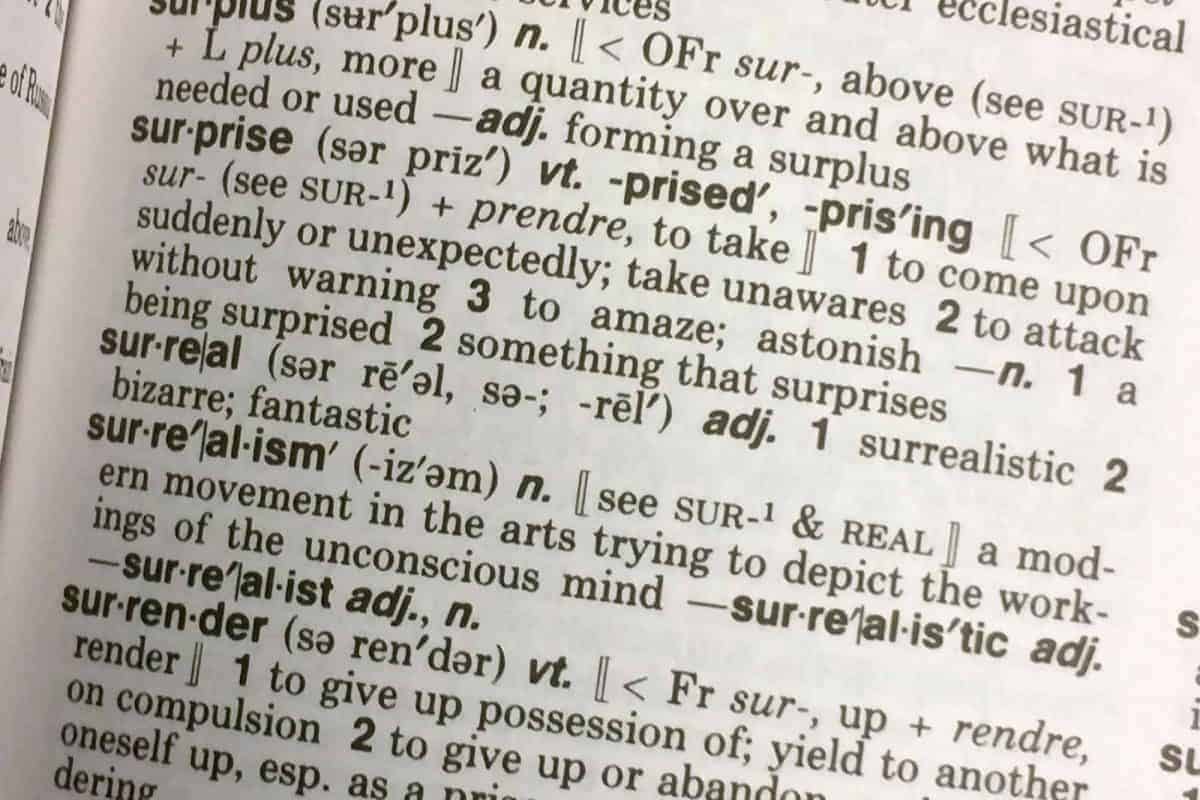This narcissist dictionary was developed as a comprehensive resource to explain concepts you may encounter while reading about narcissistic abuse.
Many of the terms are used and explained using personal stories of survivors and the most up-to-date research in my book Why Can’t I Just Leave? You can read the first chapter for free right now here:
You can read the first chapter for free right now by clicking here
This comprehensive dictionary is a living document and is updated periodically to reflect emerging research and the growing use of terminology for defining narcissism, narcissists, pathological love relationships, coercive control, and narcissistic abuse. is divided into the following sections:
- Diagnostic Terms Related to Narcissism and Narcissistic Abuse
- Terms Used to Explain the Narcissist’s Behavior
- Terms Describing Roles of People in the Narcissist’s Life
- Terms Related to Narcissistic Abuse Tactics
- Terms Related to Coercive Control and Mind Control
- Terms Used to Describe Healing from Narcissistic Abuse

Diagnostic Terms for Defining Narcissism and Narcissistic Abuse
Anti-Social Personality Disorder (ASPD): A type of personality disorder in which an individual shows a strong disregard for norms, morals and the law, or the rights and safety of others. People with the disorder show a willingness to manipulate and exploit others. They also have a lack of empathy and may engage in impulsive, irresponsible behavior to serve their own ends. They are unconcerned with what others think and can be aggressive and hostile.
Covert Narcissist: A narcissist who is able to hide his or her more obvious narcissism and feelings of entitlement and superiority. He or she is not likely to display the typical symptoms of classic narcissism such as grandiosity and attention-seeking.
Dark Tetrad: Four personality traits that are correlated with criminal and antisocial behavior: narcissism, psychopathy, Machiavellianism, and sadism. Although social research demonstrates that each of the four has distinct qualities, they also have some overlapping characteristics, including a lack of empathy and remorselessness and a willingness to exploit and manipulate.
Ego-Syntonic/Ego-Dystonic: When a disorder produces behaviors or attitudes that are compatible with a person’s self-image, they are ego-syntonic. Most personality disorders are considered ego-syntonic, as the individuals with the disorders do not see their actions or attitudes as problematic. Disorders that produce attitudes or behaviors that do not align with a person’s self-image are ego-dystonic. Depression and obsessive-compulsive disorder are two examples.
Emotional Abuse/Psychological Abuse: Acts of verbal aggression or non-physical hostility that result over time in the loss of the target’s self-esteem (emotional) or ability to trust one’s own mental thought processes (psychological).
Malignant Narcissist: A special sub-type of narcissist that has also some traits of ASPD, such as aggressiveness, deceitfulness, and remorselessness. They are often sadistic and gain pleasure from hurting others.
Narcissistic Personality Disorder (NPD). A type of personality disorder in which a person has grandiose fantasies of success and power with few or no achievements behind the fantasies. People with the disorder are constantly comparing themselves to others and feeling envious. They may also feel others are envious of them. They believe they are unique and entitled to special treatment, admiration, and obedience. In addition, they lack emotional empathy and have a willingness to exploit others for their own benefit.
Neurotypical. A term once used to describe individuals who were not on the autism spectrum, it is now used as a term to contrast individuals who do not have a particular mental or behavioral disorder with those who do.
Overt Narcissist. A “garden-variety” or typical narcissist whose emotional displays, grandiosity and feelings of entitlement and superiority are on obvious display to others.
Pathological Love Relationship: A relationship in which a person experiences “inevitable harm” as a result of their partner’s low-conscience disorder.
Psychopath/Sociopath. Considered to be sub-types of ASPD where the criteria must include disregard of laws and norms. Their meanings have changed over time and are used inconsistently. Only the term “psychopath” has been recognized in the DSM-5, and it is not an official diagnosis. Some researchers believe that a psychopath is more biologically-determined and a person’s environment is more responsible for producing a sociopath. Still others believe that there are differences between the two in how they behave. For example, they believe that a psychopath is more calculating and a sociopath acts more spontaneously. Finally, still other researchers believe that there is no difference– they are two terms applied to the same group of people with little evidence to support that there is an actual distinction in cause or behavior. The main features that both terms share that are relevant to narcissistic abuse are the lack of a conscience or remorse and the ability to manipulate and deceive.¹

Terms Used to Explain the Narcissist’s Behavior
Emotional empathy/Intellectual empathy. Narcissists have the capacity for looking at the expressions on the faces of others to understand their emotions or for hearing a description of how others feel and having a rational response to it. This is intellectual empathy. They are less capable of imagining incidents happening to others and how those incidents would feel. Because of this, the impact of their actions on others does not generally play a role in their decision-making.
Mask Slipping. Narcissists have to put on a front that they view the world as everyone else does. Although not all are self-aware, they are aware that not all of their actions would be viewed favorably. They have learned how to hide their true motives and feelings behind a “mask of sanity.” When cracks show the behaviors that are incongruent with their image, it is called “mask slippage.”
Narcissistic Injury. This was at one time technical psychological jargon from Sigmund Freud to refer to a threat to or attack on the narcissist’s ego by someone else. The injury occurs due to a failure to reflect back the idealized image that the narcissist has of himself or herself. The term has now become a common one used in the online narcissistic abuse community to describe what happens when a person does something a narcissist perceives as criticism.
Narcissistic Rage. Another technical term to describe the blind anger of the narcissist in response to a narcissistic injury that results in the mask slipping. In response to it, the narcissist may engage in a host of abusive behaviors designed to seek revenge on the person who caused the injury.
Object Constancy. Narcissists have attachment issues. They cannot hold in their minds the idea that someone can have both positive qualities and negative ones at the same time, or that a person may be someone they like but can do things that they don’t like or agree with. This is called lacking “object constancy.”
Splitting. Because of the lack of object constancy, narcissists “split” people. When a person does what the narcissist wants– that is, providing high-quality narcissistic supply (see below–Roles of People)–they are perceived as “good.” When he or she does something the narcissist doesn’t like– such as causing a narcissistic injury, merely by not living up to the narcissist’s high standards for reflecting back narcissistic supply– they are perceived as “bad.” This is what often causes the dramatic shifts between idealization and devaluation of the partner by the narcissist (see below–Abuse Tactics or Acts).

Terms Describing Roles of People in the Narcissist’s Life
Flying Monkeys. All of the people (friends, family, exes and other admirers) in the narcissist’s “fan club” who do the bidding of the narcissist because they are blinded by his or her charms.
Golden Child. In families where one of the parents is a narcissist and there are multiple children, the narcissistic parent may designate one child as the favorite, who becomes a reflection of the narcissist. The parent strips the child of an identity and makes him or her of an extension of the parent, praising him or her excessively for achievements the parent values and distorting failures as the fault of others– all of which stunts the emotional growth of the child.
Harem. The admirers and suppliers of narcissistic supply for the narcissist. Can consist of current love interests, past love interests, people the narcissist flirts with, family members, friends, co-workers, or anyone that the narcissist keeps in his or her circle to tell him or her how great he or she is. They all play different roles, and he or she may switch them out as favored or preferred members of the inner circle. They also may fall from grace if they do not play their roles accordingly.
Narcissistic Supply. The lifeblood for a narcissist, consisting of attention, adoration, admiration, and support required to bolster self-esteem and maintain his or her idea of him or herself as special and important. Self-aware narcissist, H.G. Tudor calls this Fuel.
Scapegoat. In families where one of the parents is a narcissist and there are multiple children, family members may designate one child as the receptacle for the parent’s or the family’s dysfunction. The narcissistic parent may heap all of the responsibility, blame, or shame for anything that goes wrong within the family onto the child, and it may extend into neglect or abuse.

Terms Related to Narcissist Abuse Tactics
Ambient Abuse. This is an atmosphere created through persistent gaslighting, instability, covert manipulation, and other psychologically abusive tactics. It results in an erosion of the victim’s confidence and independence so that the abuser can control and exploit the victim.
Bait and Switch. Victims don’t fall for narcissists because they are cruel in the beginning. Narcissists first show them an intense amount of attention, affection and what feels like love before they begin to slowly reveal a side of themselves that is cold, inattentive and vicious, making it difficult for the victim to know what they should believe about how their partner feels about them and whether they should hold out for the narcissist to stop treating them unkindly. Also known as the “mean and sweet cycle” or the “nice and nasty cycle.”
Baiting. A tactic used by the narcissist to intentionally provoke an emotional response from the victim, generally while feigning innocence.
Blameshifting. This is the act of avoiding responsibility for an act of wrongdoing by claiming that the act would not have occurred but for the actions of someone else (or something else, such as alcohol, youth, stress, or other external factor).
Crazy-making. A general term used to describe tactics used that over time cause self-doubt, confusion and that result in the victim questioning reality. Examples of how it can occur are when the narcissist’s actions don’t match his or her words, when he or she gaslights or lies about his or her actions or what has been said, and when he or she refuses to discuss problems in the relationship in a constructive manner (see Word Salad below–Abuse Tactics or Acts).
Dog whistling. Another term for baiting, except narcissists often use this tactic in front of others to humiliate the victim or make him or her seem off-balance for the purposes of smearing the victim or preparing for a break-up.
Dosing. The act of providing morsels of positive attention after the cruel phase has begun to keep the victim strung along.
Double standards. Narcissists often have two sets of rules: one for themselves and one for everyone else, as they think they are entitled to special treatment. They will often have high standards for honesty and fidelity among those they choose for partners but have no intentions of adhering to these standards themselves.
Ex-recycling. Narcissists have a tendency to stalk and try to return to their former partners for attention and control. They also enjoy using former partners in other ways as well. If you do want to talk to them, they consider you to be still in love with them and they will use you to make their current partner(s) jealous. If you don’t want to talk to them, you’re bitter, jealous or crazy and they will use you to make their current partner(s) feel sorry for them (see Triangulation below–Abuse Tactics or Acts).
False flattery. This is a form of love-bombing (see below–Abuse Tactics or Acts), in which a narcissist compliments another on whatever they think that person may be insecure about, in an effort to get him or her to return the compliments, as they love hearing about themselves.
Final discard. Narcissists follow a relationship pattern (see idealize-devaluation-discard below–Abuse Tactics or Acts), but they often return and keep their ex-partner in a rotation for months or even years. A final discard is the moment when some narcissists decide to leave the partner for good, sometimes in the most harmful way possible. Partners can never know if they have been subjected to a final discard, as narcissists may potentially return years or even decades later (see hoovering below–Abuse Tactics and Acts). Therefore, an argument can be made that the “final discard” is theoretical.
Future-faking. Narcissists make grandiose promises about the life they plan to lead with a partner to fake intimacy and make them feel as if they are closer to the narcissist or more familiar with him or her than they actually are.
Gaslighting. A form of manipulation where the narcissist denies, provides conflicting information or outright lies over and over again in direct contradiction to what another person can blatantly perceive using his or her own five senses. The other person begins to doubt his or her perception of reality. The term comes from a 1944 movie where a man purposely tries to drive his wife insane by making the gaslights flicker, then telling her that she is imagining it when she points it out.
Grooming. The process of slowly mixing negative behavior in with positive behavior in a relationship in order to wear down a partner’s boundaries so he or she will accept abusive treatment. It’s the “boiling the frog” metaphor, where the heat is turned up slowly and the frog doesn’t know it’s being boiled until it’s too late.
Hoovering. A “hoover,” named after a brand of vacuum cleaner, is a tactic meant to “suck” a partner back into the relationship. It happens after a period of silence during which the partner and the narcissist are not in contact with each other. What characterizes this type of contact after a break-up with a narcissist is that it is insincere; no change in behavior will have occurred if the partners reunite.
Idealize – Devaluation – Discard. Considered the cycle of abuse in narcissistic relationships, in the idealization stage at the beginning of the relationship, the narcissist puts his or her partner on a pedestal and showers them with excessive praise and attention. At some point, the narcissist will begin to see his or her partner as flawed or even grow bored and the devaluation phase begins. Many tactics characterize this phase, such as verbal abuse (see below–Abuse Tactics or Acts), withholding, humiliation, and smearing (see below–Abuse Tactics or Acts). Finally, when the narcissist no longer sees any value in the partner, perhaps if the partner has reacted in a way that the narcissist perceives negatively, such as demanding respect, the narcissist may discard the partner. The cycle often repeats many times before the relationship ends.
Intermittent Reinforcement. This is a pattern of behavior in which the narcissist randomly intersperses kindness between acts of cruelty. Psychological research demonstrates this is an especially powerful tactic. Because the partner never knows when the narcissist will show kindness, the randomness of the benevolence is one of the most critical forces that keep him or her tied to the relationship, hoping each time that the cruelty has come to an end for good.
Love-Bombing. A period of intense positive attention from the narcissist that can include excessive flattery and declarations of love, mirroring (see below–Abuse Tactics or Acts), future-faking (see above–Abuse Tactics or Acts), gifts, sex, domination of the partner’s time, and fast-tracking the relationship. The result of these actions is an intense bond, where the partner becomes very vulnerable to, trusting of and dependent on the narcissist.
Mirroring. This is one of the tactics used during the love-bombing that takes place in the beginning of the relationship. It can be physical when the narcissist mimics the partner’s body language, behaviors, and actions. It can also occur when the narcissist claims to enjoy the same activities or to have had similar experiences to make it appear as if the two have a lot in common.
Pathological lying. Lying that is done compulsively out of habit. It may not always seem to personally benefit the liar. It is known to be a common characteristic of many narcissists, psychopaths, and sociopaths. Sometimes, it is thought that they may engage in the lying for control or even enjoyment, in what is known as “duper’s delight.”
Projection. This is a defense mechanism narcissists commonly use to avoid their own feelings of shame caused by their negative behaviors. It occurs when they accuse partners of the things they themselves have done.
Silent Treatment. A period of non-responsiveness in which the narcissist disappears and treats the partner as if he or she doesn’t exist. The narcissist implements it as a form of punishment if a partner engages in a behavior that the narcissist doesn’t like.
Smear Campaign. To guard against exposure, prepare for their exit from the relationship, or gain sympathy from others, narcissists may spread gossip or tell half-truths or outright lies about their partners behind their backs.
Stonewalling. Refusal to engage in a conversation or provide information or other resources as a form of punishment for bringing up topics that a narcissist doesn’t like.
Triangulation. The act of using a third party in a conflict to make the narcissist appear in high demand, to manufacture emotions, or to gain further narcissistic supply (see above–Abuse Tactics or Acts).
Verbal Abuse. Using namecalling, putdowns, or humiliation to weaken the self-esteem of the partner.
Victim-Blaming. The act of blaming or partially blaming the victim for the act of harm that has befallen him or her. Narcissists often use blameshifting statements to avoid taking responsibility for their abuse, such as stating that their partner was not caring or understanding enough, or was critical or reacted in a certain way, or left or did not give him or her a chance to change.
Victim card. This is a name for a tactic narcissists use when they attempt to gain sympathy from others with the ultimate ulterior motive of excusing their abusive behavior. They may blame it on something negative in their past, a “bad childhood,” a broken heart, a lost love, a father that was never there or something else or all of the above.
Word Salad. Circular language tactics narcissists use to ensure that conversations with others never have satisfactory resolutions for the other party; can include projection (see above–Abuse Tactics or Acts), stonewalling (see above–Abuse Tactics or Acts), blameshifting (see above–Abuse Tactics or Acts), sympathy ploys, bringing up something the partner did, bringing up unrelated issues, starting the conversation over, and others.

Terms Used to Explain Coercive Control or Mind Control
BITE model: A model developed by cult expert Steven Hassan to explain mind control, it consists of the four components necessary for successful mind control in order to effectively resolve cognitive dissonance: Behavioral Control, Information Control, Thought Control, and Emotion Control.
Brainwashing: A term used to explain the most repressive forms of mind control in which individuals know they are under a coercive influence. Because of this, they may be subjected to the most overt and some of the most physically harsh methods of thought reform, such as totalitarian societies and prisoners of war.
Coercive Control: A term for excessive monitoring and covert or overt dominance over one or more areas of a partner’s life, such as finances, career, friendships, clothing choices, hobbies, medical care, food choices and eating habits, or other. It usually begins as concern for the partner, starts slowly, and can be subtle. It can be cloaked by and hidden in many seemingly loving behaviors at first, such as criticizing in an off-handed way the partner’s body, clothing, accomplishments or friends; invading privacy by reading private messages or listening in on phone calls; accusing the partner of cheating when no evidence exists; insisting the partner remain in constant contact; and making it very unpleasant for the partner to do things that don’t involve the abuser. The results of these behaviors are to lower the self-esteem of the partner and to isolate him or her from others and give the narcissist more control.
Cult: A group in which members express very strong or absolute devotion to an idea or a person, deceptive practices were used to recruit members into the group, and a leader or leaders exploit and manipulate the devotion of the group members to their own detriment. A cult can have as few as two people or as many as thousands, and they can be religious, political, business-oriented,
Dual Identity: After a person has been in a repressive environment that restricts his or her thoughts and actions, including a relationship with a low-conscience individual, he or she may develop dual thoughts and motivations. This dual identity is a survival mechanism that emerges to avoid being absorbed by the partner and protect the “authentic self,” while also resolving cognitive dissonance and avoiding further punishment. The authentic self recognizes the partner’s behavior as abusive, but the “false self” has adapted to the abuse and manipulation.
Hypnosis: A trance state in which a person’s mental focus turns inward and he or she disconnects from the external environment. This results in the body being able to perform acts without mental attention.
Mind Control: The use of tactics or behaviors to influence a person’s autonomy and identity. They may be forcible or deceptive, known or subtle. The goal is to replace the person’s authentic self with a different identity that will act in ways that serve the interests of the controller. The mind control is usually not total when the environment is non-immersive, thus the dual identity emerges (See Dual Identity above).
Undue Influence: A form of mind control in which deceptive tactics were used to convince a person to put themselves in a position to make themselves vulnerable to exploitation and manipulation.

Terms Used to Explain the Effects of the Abuse on the Victim
Abuse Amnesia. A specific form of denial in which the partner of an abuser suppresses the awareness of the abuse he or she has endured in order to carry on the relationship. This is partially a result of cognitive dissonance (see below–Effects), and the fact that the first idea that was formed is the most resistant to change.
Chemical Bond. The brain chemicals of the partners of the narcissists become dysregulated and synced up with the cycle of abuse, releasing dopamine and oxytocin from the reward centers of the brain when the narcissist lovebombs (see above–Abuse Tactics or Acts) the partner and Cortisol and norepinephrine during stressful times when the narcissist disappears during silent treatments (see above–Abuse Tactics or Acts) causing immense pain. This creates a chemical addiction to the narcissist that is difficult to overcome.
Cognitive Dissonance. The uncomfortable feeling of anxiety from holding two beliefs that contradict one another. A person cannot hold both in the mind for very long without finding some way to rationalize or discredit one of them.
Complex PTSD (C-PTSD). A variation of Post-Traumatic Stress Disorder in which chronic traumatization occurs from living a long-term traumatic situation rather than one event or short-term situation or in which multiple traumatic events occur. Examples include child abuse, domestic violence, or being a prisoner of war. Those with the condition typically have issues with emotion regulation and self-perception.
Dissociation. The state of feeling disconnected to what is happening around oneself, as if it has an unreal quality to it or is happening to someone else.
FOG. The mental state of confusion generated by the psychological and emotional abuse perpetrated by narcissists. It stands for Fear, Obligation and Guilt, the manufactured emotions that narcissists use to try to keep their partners bound to them.
Identity Erosion. During all stages of the narcissistic cycle of abuse, narcissistic abusers use emotional control, behavioral control, information control and thought control (See BITE MODEL above) to reward and punish their partners. As a result, the partner adopts a perspective that identifies and protects the partner and his or her personality changes. This identity erosion is not “total,” and in other contexts is referred to as a “dual identity” (see above) or “doubling” because partners may often feel as if they are in conflict with themselves over their own desires.
Learned Helplessness. A psychological mindset the partner of a narcissist may develop in which he or she feels powerless to leave or escape the relationship despite having a desire to be free of it. It generally results from traumatic or ineffective attempts to leave due to the response by the narcissist. When the narcissist repeatedly draws the partner back into the cycle despite his or her desire to leave, the partner begins to feel as if he or she has no control to change the situation.
Post-Traumatic Stress Disorder (PTSD). A state of extreme anxiety that activates a person’s “fight or flight” response in the brain on a consistent basis. It is so encompassing that a person’s thoughts, emotions, and beliefs about the world are all affected. A single traumatic incident or an event with a time-limited duration, such as an accident, natural disaster, sexual assault, or tour of duty, is usually the cause.
Reactive Abuse. This is the term for what can occur if the abuser torments or intentionally baits the victim through manufactured emotions, triangulation (see above–Abuse Tactics and Acts) or other tactics into responding. Although the abuser has purposely generated an abusive atmosphere of power and control over the partner from the beginning, when he or she eventually gets a reaction from his or her partner, the narcissist can then use it to justify his or her abuse or claim victimhood and gain further sympathy or narcissistic supply elsewhere.
Stockholm Syndrome. A phenomenon in which victims of trauma who are subject to horrific conditions or threats to their safety identify with their tormentors due to moments of kindness that they experience from them. Those moments of humanity enable them to develop positive feelings toward the tormentors as an unconscious defense mechanism to survive the trauma.
Trauma Bond. Similar to Stockholm Syndrome, in an abusive relationship, the abused partner may develop a loyalty to the abuser and suppress memories of their negative treatment in order to view him or her in the most positive light.
Walking on Eggshells. This is a metaphorical term for the emotional anxiety the partner of an abuser can feel from not knowing what might set off an emotional tirade from a narcissist. The partner starts to watch everything he or she says or does and curb his or her behavior in order to avoid upsetting the abuser.
Terms Used to Discuss Healing from Narcissistic Abuse
Closure. Narcissistic relationships rarely have the same kind of closure as ordinary relationships because both partners do not share the same narrative of the relationship. Because the relationship was characterized by deception and psychological manipulation, the partner of the narcissist will never have the answers, apologies, or good-byes from the narcissist that would provide peaceful closure because the narcissist is incapable of providing them. The partner must seek his or her own closure by understanding the nature of narcissism and narcissistic abuse.
Fog lifting. The feeling of being able to think more clearly about the relationship once the partner of a narcissist institutes no-contact (see below–Healing). Over a period of days and weeks, partners tend to notice confusion and anxiety draining away as a function of the deprogramming from the psychological abuse.
Grey Rock. A modified form of no-contact (see below–Healing) in which the partner remains in technical contact with the narcissist out of necessity, however, has emotionally detached from him or her. The contact occurs only when absolutely necessary, is devoid of emotion, and does not provide the narcissist with any information beyond what is essential to convey.
No-Contact. A deliberate physical and psychological act by the partner of a narcissist to remove the narcissist from the life of the partner that includes taking steps in the material world to ensure that no contact can be made, and mentally preparing psychologically for not interacting with the narcissist again.
1 A more thorough explanation of these three terms and the similarities and differences among them can be found in the articles Narcissist or Sociopath: What’s the Difference? and in 9 Types of Narcissists: The Ultimate Guide.
First Published 7/9/2018
Updated 4/12/2022






